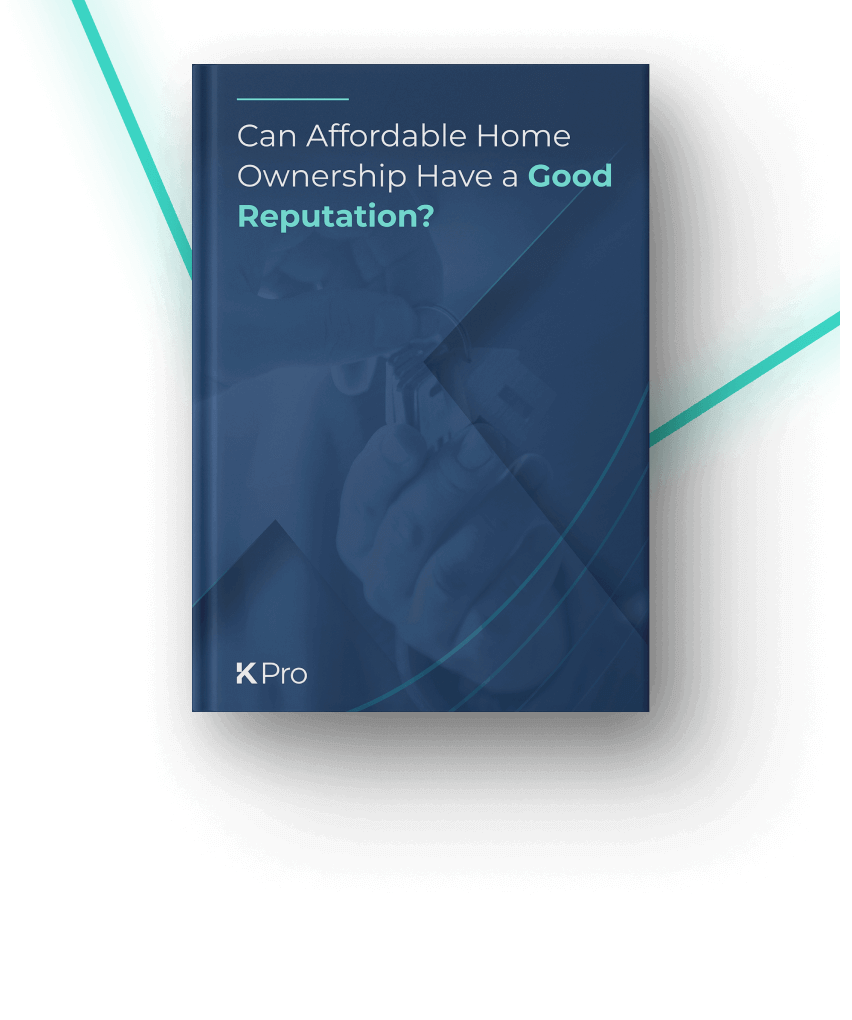
How to Transform Housing Association Customer Experience
Shared ownership residents make up a small and often underserved segment of housing association customers. Critically, this group provides something important to wider industry success — revenue. By improving the customer experiences of shared ownership customers — who actually have a choice of where they purchase a house — housing associations can generate the revenue they need to reinvest across their organisation and deliver broad transformation.
If housing associations want to transform customer experiences for shared ownership tenures, they don’t need to look any further than the commercial market. Success requires delivering personalised, automated and streamlined digital experiences. Industry-specific software is now available and able to make this a reality, and we’re going to explain why.
In this article, we’ll explore how focusing efforts on shared ownership can positively transform all aspects of your housing association’s customer service, and how technology can help.
Suggested reading: To learn more about the impact of technological transformation on the affordable housing sales process and customer experience, check out our new eBook — Can Affordable Home Ownership Have a Good Reputation?

Why Shared Ownership is Worth Focusing On
Shared ownership makes up between 5 —10% of the average housing association’s tenants. While this number might seem small, it’s worth remembering the importance of this customer segment for the overall business of a housing association.
The reason? Shared ownership customers bring in a disproportionate share of the revenue for housing associations. The most recent available statistics show that housing association shared ownership sales rose by nearly 10% in 2020.1 Far from neglecting shared ownership, housing associations should see it as an opportunity.
Strategies for success
By focusing efforts on selling more shared ownership properties, housing associations increase revenues that can then be reinvested back into shared ownership (and social housing: housing associations’ main business by volume). And reinvestment means more properties and increased market share, which means more customers — and an enhanced customer experience.
If this sounds circular, that’s because it is: an improved sales process, revenue generation, reinvestment and improved customer experience create a feedback loop to further reinvest and improve experiences. This makes increasing market share in the shared ownership segment strategically important for housing associations.
So, how? The most effective way to increase your market share in shared ownership is by adopting and deploying digital tools to transform how the marketing, sales, and lettings processes occur. With suitably specialised tools, this change can simultaneously boost your housing association’s overall operations, not just your shared ownership segment.
Improve your customer experience by streamlining your sales and letting process.
Transforming the Sales and Letting Process
Nobody in the industry has missed the transformation of the real estate market in recent times. Online listing platforms like Zoopla and Rightmove were the initial drivers of this change. The creation of digital tools to automate property listing and centralise lead management helped real estate agents and companies deal with these platforms, furthering the digital transformation.
The result has been a more straightforward and personalised buyer experience. Customers are increasingly tech-savvy and confident in searching for properties themselves through online listing platforms. According to one study, 99% of millennials begin searching for homes online and 58% found their current home on a mobile device.2 These changes have improved the value that customers receive from providers, simultaneously enhancing their customer experience.
Historically, shared ownership — along with the wider affordable housing market — has struggled to keep up with the advances seen in the standard commercial sales and lettings process. This is due to the complexity of the shared ownership process compared to typical real estate sales pipelines.
For example, standard multi-platform listing tools don’t allow for the addition (and updating) of specific shared ownership listing details: standard commercial estate agency tools cannot handle the nuances of varying shared ownership percentages, the necessary financial agreements, etc. The digital tools used by the commercial market simply weren’t designed for these complexities, making them mostly unusable to affordable housing providers.
Strategies for success
Fortunately, the arrival of dedicated affordable housing software (including shared ownership) can now help associations change this situation. Digital tool creators built these solutions to handle the complexities of this market segment by enabling:
- One-click listings: Allowing providers to list on various platforms from a single place and update details across these platforms simultaneously. This overcomes the previous difficulties of adding complicated details using the multiple listing platform’s varying requirements while ensuring all customers have the right information across all platforms at the same time.
- Centralised lead management: Simplifying how leads are collected and managed by centralising leads from different platforms in one place. This simplifies how information is accessed and stored, enabling the journey mapping of leads and more efficient communication with customers across their lifecycle.
- Personalisation and Outreach: Achieved through automation, providers can create touchpoints with customers throughout their lifecycle and attain data to help personalise these efforts. This gives providers timely access to data, meaning your sales teams can contact customers quickly, and with relevant information.

Using Technology To Put People First
Technology helps improve digital processes, making providers’ operations more efficient and streamlined. But this is all in pursuit of driving human experiences and how customers and providers interact.
Compared with the commercial market, affordable housing is often seen as “second best”, particularly in terms of customer experience. For example, affordable housing residents are nearly three times more likely to experience a problem accessing property services compared with a customer in the commercial market3.
Strategies for success
You should use technology to make everything as easy and straightforward as possible for the customer. And boosting your understanding of these customers can help you provide them with personalised and useful information — all at the right time.
Putting control in the hands of your customers can help them feel empowered and in control of their journey. Self-service portals is one good way to do this, as it improves customer experience while allowing you to keep track of customers through their life cycle. Your personalisation, automation and outreach has helped you gather information on what customers want. You can then use this data to improve their experience by providing information how and when they want it.
And by embracing new digital tools, the gap between the commercial and affordable housing market narrows. This improves shared ownership market share and the customer experience housing association’s provide.
Housing associations neglect shared ownership and shared ownership customers at their peril. Adopting new dedicated tools is vital to bring improved experiences to affordable housing and shared ownership customers.
KPro is a digital toolkit purpose-built to meet the unique requirements of the affordable housing market, and help transform customer experience. KPro handles everything from one-click listings, lead and customer relationship management, and process automation to reporting and analytics.
The toolkit includes a customer-facing feature: the Customer Portal. This enables providers to manage their relationships with customers once the traditional sales and letting process has ended. Providers stay connected with customers across their lifecycle, while tenants gain control over their customer journey. In the Guide, customers can manage their:
- “Favourite” listings and properties
- Viewings and appointments
- Application form
- Documentation status and requirements
- ID verifications
- Sales milestone tracker
- Moving in arrangements
Embracing these digital tools and creating an easy sales and letting process helps housing associations boost shared ownership market share. By unlocking more revenue through more sales, housing associations can reinvest according to their business priorities. Revenues can be re-invested in social housing, shared ownership and customer service, improving customer experience across the board.
Book a free demo to see how KPro can improve your sales and letting processes and transform your customer experience.
1 Special report: housing association shared ownership sales rise almost 10% in 2020
2 The Top Four Ways Millennials Are Changing the Housing Market
3 The social housing sector must do better on customer service
About The Author
Having worked alongside registered providers for 4 years, Lucy now leads the implementation and onboarding of customers onto the KPro software toolkit, ensuring the process from procurement through to day-to-day support is streamlined.







